El Teatro La Paz or Rio Theater
Introduction
Text-to-speech Audio
Images
2014 photograph of the front of El Teatro La Paz or Rio Theater by Carol Highsmith (Highsmith Archive, Lib. of Congress)
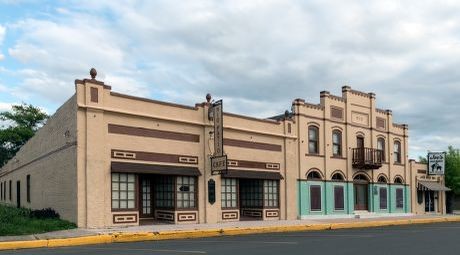
1998 photo of front of building complex 514-518 Doherty by Terri Myers
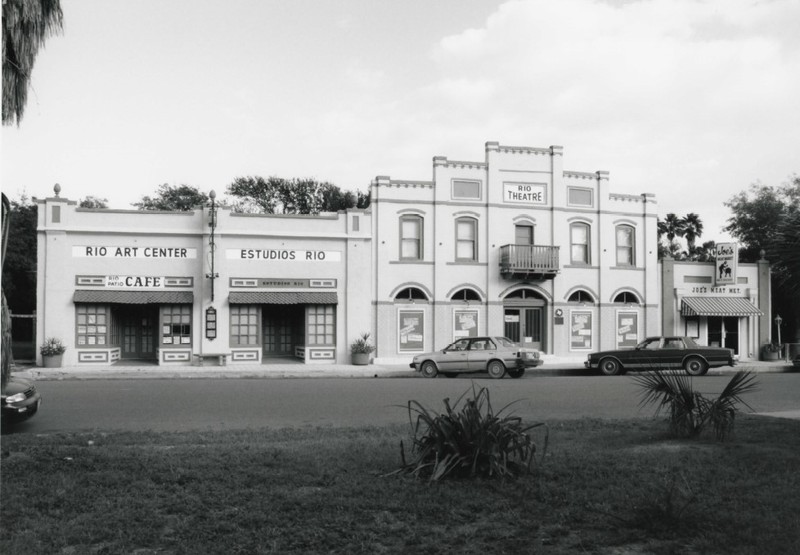
Rio Theater building on 1949 Sanborn map (red=brick, yellow=wood, S=store, D=dwelling; p. 4)
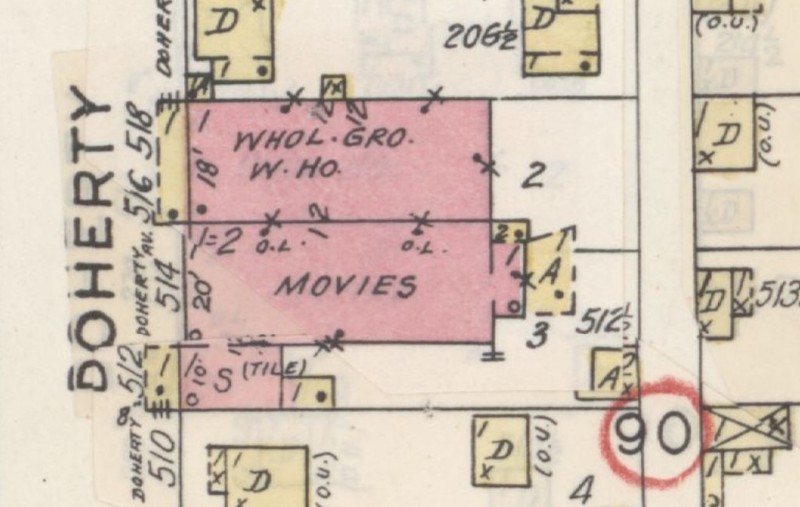
Photo of the theater in 1920 advertisement for sale in Spanish language newspaper
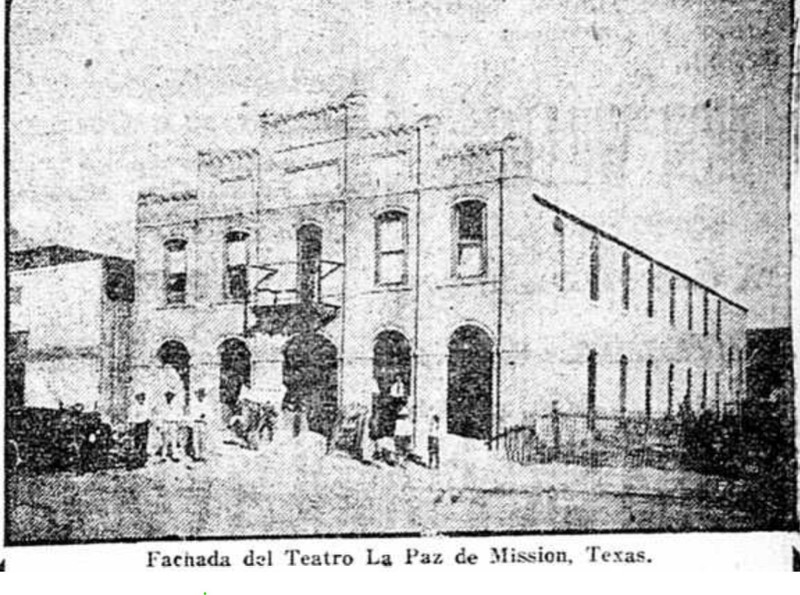
1920 advertisement for theater in Spanish language newspaper
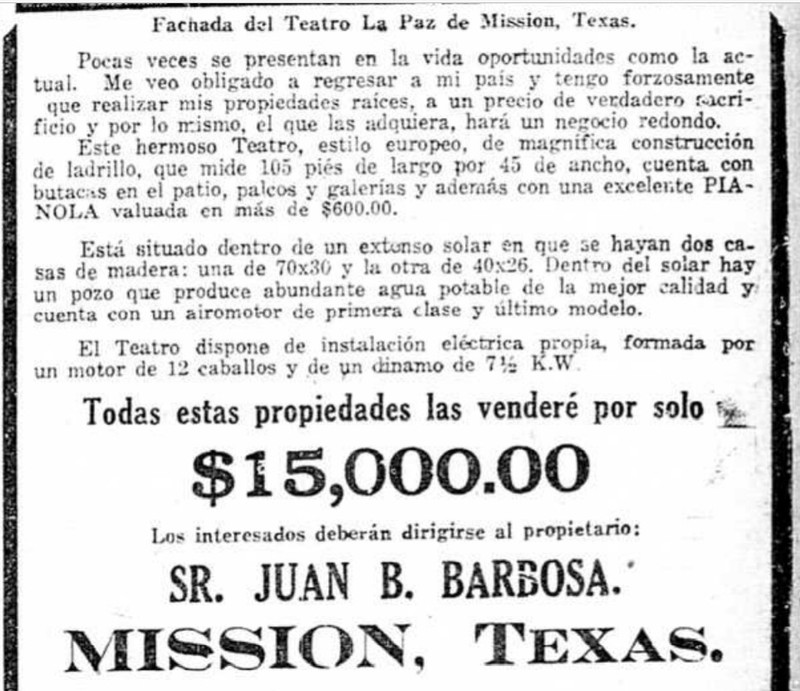
El Teatro La Paz building at "270 Dougherty St." on 1919 Sanborn map (p. 4)
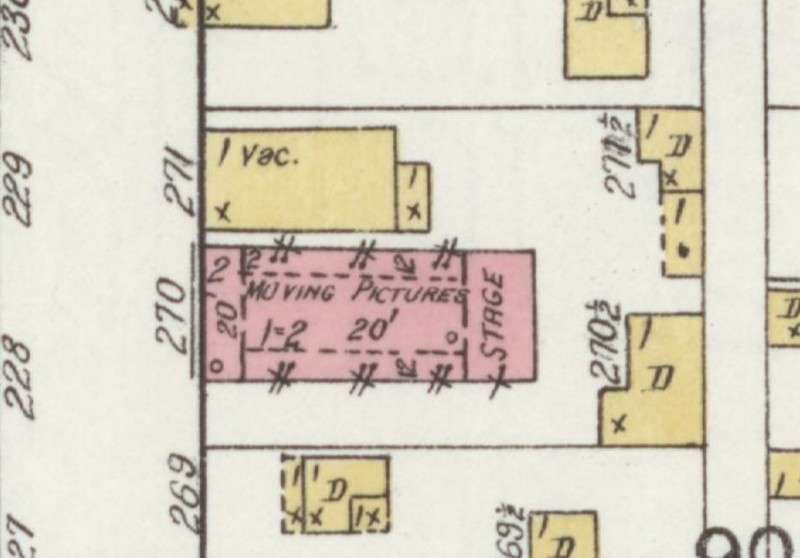
Backstory and Context
Text-to-speech Audio
Juan Bautista Barbera was born in Spain and moved first to Brownsville in 1905 and then to Mission in 1912. He purchased two lots where the theater would be built and began construction in 1912, finishing in 1915. The south side of Mission developed as mainly Hispanic, and the theater aimed to bring Spanish-language entertainment to town. Traveling theater companies from Mexico preformed at the theater. Juan B. "Barbosa" advertised the theater for sale in a Spanish language San Antonio newspaper in 1920 for $15,000.
Some of the politicians and scholars who have given lectures in the theater are Jose Vasconcelos, Jose Manrique (Governor of the Mexican state of Tamaulipis) and Nemesio Garcia Naranjo (an exiled Mexican official). The theater building was used to serve food to the hungry during the Great Depression. Ceremonies to crown the Diecisies de Septembre (16th of September) Fiesta Queen have been held at the theater on Mexican Independence Day. A print shop plus pool tables and a bowling alley were in the north building (518 Doherty) and a pharmacy was in the smaller, south building (514 Doherty).
El Teatro La Paz was purchased in 1945 by Enrique Flores Sr., who renamed it the Rio Theater (El Cine Rio). Barbera moved to Laredo and retired. The theater became a location for the arts under the operation of Flores and his wife, Carmen; Mexican and the occasional American movies were screened. By 1949, a wholesale grocers warehouse occupied the north building and a store operated in the south. Enrique Flores Sr. was a grocer and the warehouse was his business. Carmen Flores opened a restaurant and ice cream parlor named the Rio Cold Spot in the south building.
Their son, Enrique Flores Jr., an artist, inherited the theater when his father died in 1971. He had exhibited some of his artwork in the theater in the 1960s. Flores and a former classmate from Pan-American College, Xavier Gorena, created a commercial art gallery named Estudios Rio in the theater complex in 1969. In keeping with the times, the gallery was the site of performance art "happenings." A non-profit art organization, the Xochil Art and Cultural Center, operated from the theater and the adjacent bowling alley. Established in 1976, the bicultural art center was one of the earliest Chicano art centers in Texas. "Xochil" means "to blossom" in the Nahuatl language of the Aztecs; the center disbanded in 1989. Besides hosting artist exhibitions, the Estudios Rio creates an annual exhibit of altars built by artists and locals for the Day of the Dead Mexican holiday (Dia de los Muertos).
The Valley International Players and Theater McAllen groups put on performances in the theater, as did high school drama clubs. The theater also offered art therapy and children's art instruction. The complex was renovated in 1981 with grant funding from Hidalgo County's Community Development program. Enrique Flores Jr. died in 1990 and the property was inherited by his sister, Carmen (Mrs. Joseph Munoz). When the National Register documentation was written in 2002, the three-part building complex contained the Rio Patio Cafe (run by Carmen Munoz) and Estudios Rio in the one-story building at 518 Doherty. Joe's Meat Market (run by Joe Munoz) occupied the one-story building south of the theater at 514 Doherty. Mrs. Munoz showed classic American movies monthly in the Rio Theater. The same businesses occupy the spaces now.
Sources
City of Mission. Rio Theater, Life in Mission, Attractions. January 1st 2018. Accessed October 4th 2020. https://missiontexas.us/life-in-mission/attractions/rio-theatre/.
Curless, Kendall. Xochil Art and Culture Center, Texas State Historical Association Handbook of Texas. Accessed October 9th 2020. https://www.tshaonline.org/handbook/entries/xochil-art-and-culture-center.
Myers, Terri. Roark, Sophie, Eisenhour, Tom P. NRHP Nomination of El Teatro La Paz. National Register. Washington, DC. National Park Service, 2002.
Sanborn Map Company. Insurance Map for Mission, Hidalgo County, Texas. New York. Sanborn Map Company, 1919, 1925, 1949.
https://www.loc.gov/item/2014632122/
https://atlas.thc.texas.gov/NR/pdfs/02000908/02000908.pdf
https://www.loc.gov/item/sanborn08662_004/
Advertisement by Sr. Juan B. Barbosa in La Prensa newspaper, May 30th 1920, p. 5, San Antonio, TX
Advertisement by Sr. Juan B. Barbosa in La Prensa newspaper, May 30th 1920, p. 5, San Antonio, TX
https://www.loc.gov/item/sanborn08662_001/
